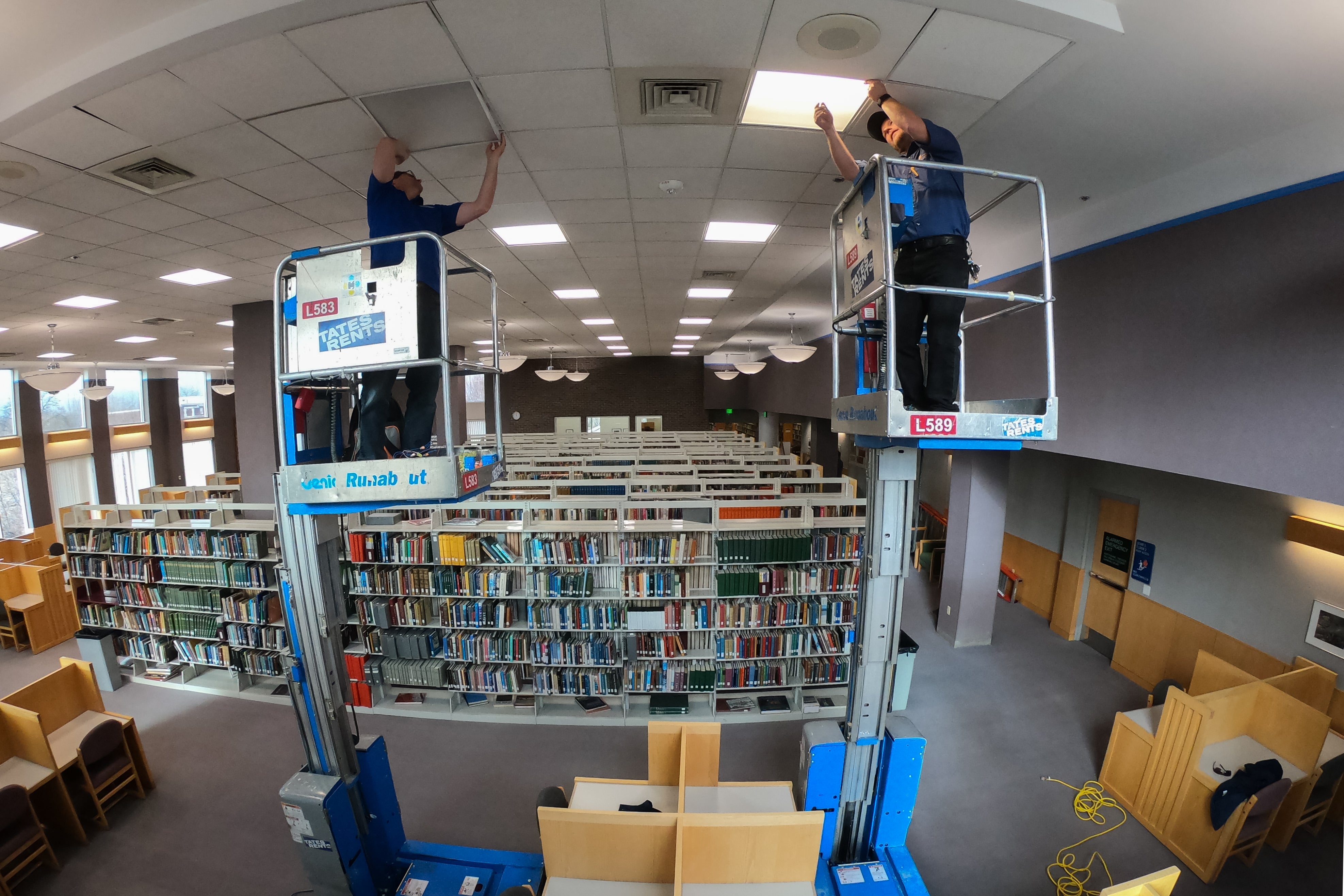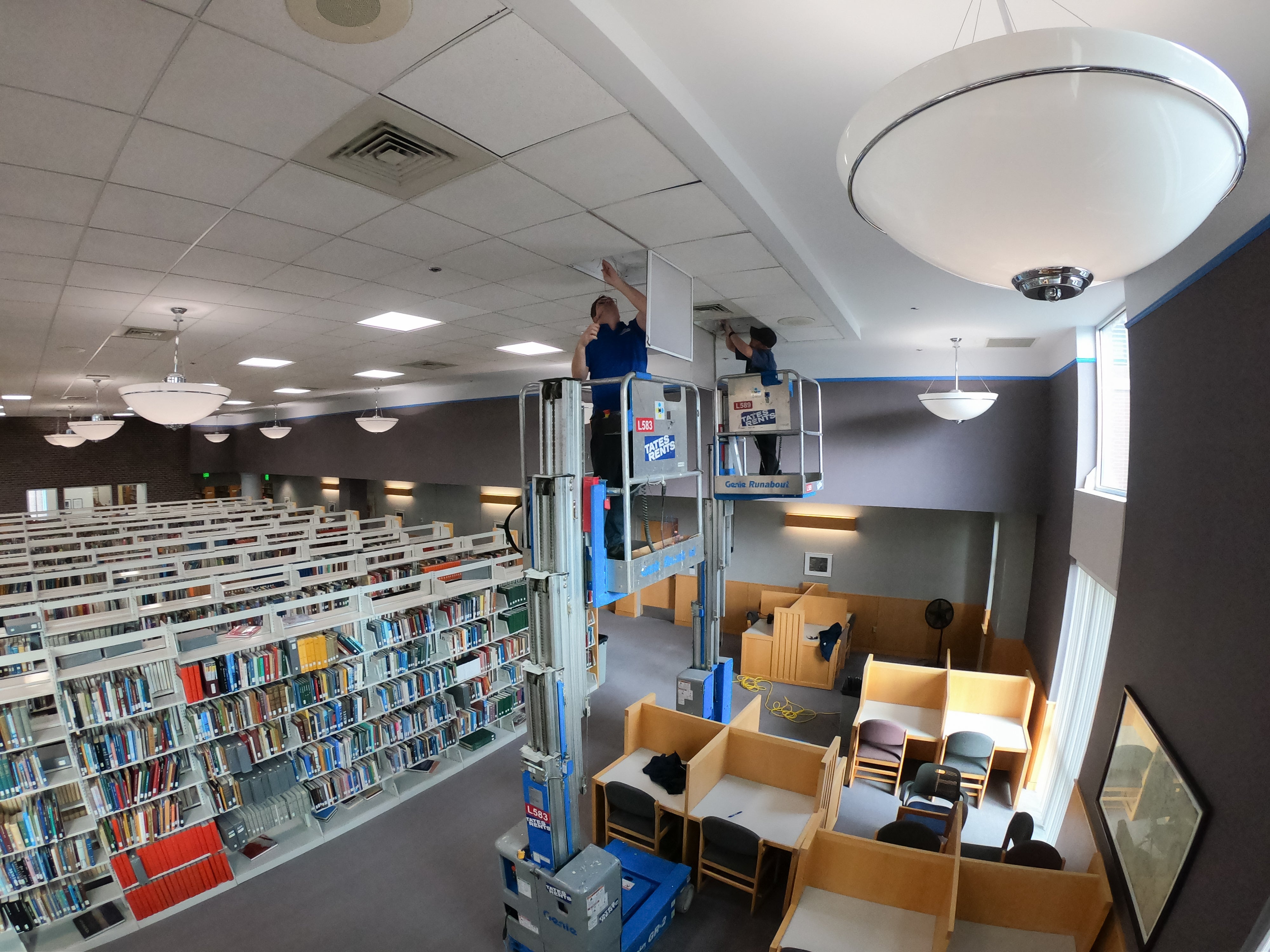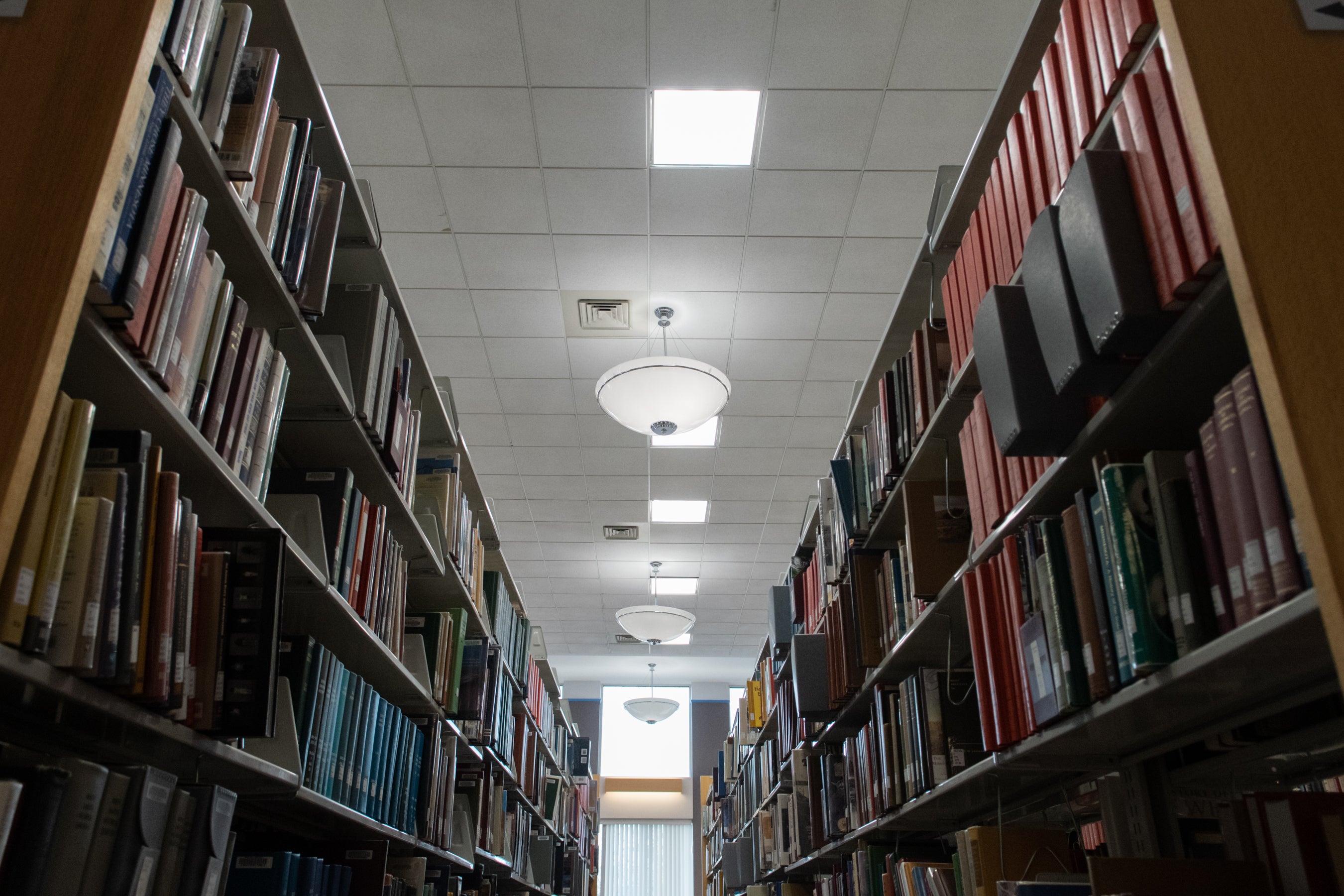
Electricians from the Facilities, Operations and Maintenance have been working their way around campus replacing outdated building light fixtures with highly efficient LED bulbs.
When it comes to retrofitting buildings on campus, the process is not as simple as it would be to replace bulbs in a home. The electricians must remove the old fixtures and ballasts that power the fluorescent bulbs. They then wire in a new LED driver using the existing electrical supply and replace the fixtures with ones containing LED bulbs.

The team is about halfway through the more than 11,000 fixtures in the Science building; next there will be 22,000 fixtures upgraded in Albertsons Library. Crews got a head start on the library this week by replacing the lighting in the McCain room on the second floor.

The new fixtures have many benefits, including:
- Energy consumption in Albertsons Library alone is projected to decrease more than one million kilowatt hours per year, resulting in a savings of $60,000 annually
- Savings in maintenance and replacement costs as fluorescent bulbs typically last 10,000 hours versus 50,000 hours for LEDs
- Less environmental impact at the bulb’s end of life because LEDs do not contain heavy metals like fluorescent tubes
- Fluorescent lights can cause health problems in individuals affected by the pulsing of electricity required to operate a fluorescent bulb
While LED fixtures now cost about the same as a comparable fluorescent fixture, there still remains a substantial financial burden to replacing a building’s lighting.
The maintenance crews are working their way around campus as budget allows. To keep the projects moving forward, the facilities team is striving to capture the money gained in energy savings and use those dollars to fund new fixtures in other buildings.
All new buildings on campus will be built with LED lights as the standard. Track which buildings have been retrofitted on the campus operations website.